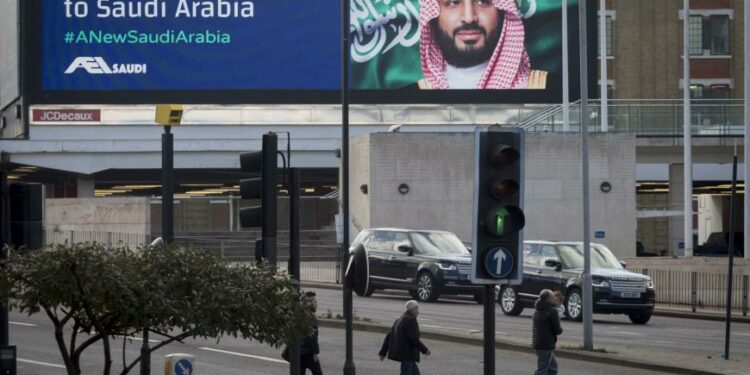
The agency referred, quoting experts, to the risks of Vision 2030 and the projects it contained, describing it as fictional, the most recent of which was The Line project.
Economic experts and analysts said Saudi Arabia suffers from a financing gap to implement bin Salman’s plans while their economic feasibility has not been proven.
They explained that the Saudi central bank’s new governor faces the delicate task of balancing the need to maintain cash reserves and potential support for the Saudi crown prince’s ambitious investment plans.
Fahd Al-Mubarak, appointed by royal order last Sunday, holds this position for the second time.
This coincides with the world’s largest oil exporter’s move to recover from the sharp economic slowdown last year, caused by low crude oil prices and the Covid-19 epidemic.
Saudi Arabia ran a budget deficit of 12% of GDP last year.
The kingdom struggles to fill this deficit by 2023, with plans to diversify the economy, with massive support from the Public Investment Fund, the kingdom’s sovereign wealth fund.
“I think there will be more pressure on the monetary side to help revive economic activity and more focus on supporting the growth goals of the Public Investment Fund, including the financing side,” said Monica Malik, chief economist at Abu Dhabi Commercial Bank.
Saudi Arabia funds its budget through debt issues and withdrawals from government reserves with the central bank.
Last year, the central bank pumped $ 40 billion in foreign reserves into the Public Investment Fund to help finance investments.
The Saudi Arabian Monetary Agency (the central bank) holds about $ 450 billion in foreign reserves.
Economists say these huge financial reserves could be used more to support the Public Investment Fund.
Especially after the issuance of a new law last year that expanded the scope of the Central Bank’s work to include supporting economic growth, in addition to preserving cash and finance. More.
Bin Salman recently stated that the Public Investment Fund, which has assets of 1.5 trillion riyals ($400 billion), intends to invest 3 trillion riyals in new sectors over the next ten years and pump at least 150 billion riyals annually into the local economy to 2025.
According to observers, “there is a financing gap in the Public Investment Fund plans.”
This gap must be closed through a set of measures, including a possible injection of capital from the Saudi Arabian Monetary Agency.
The transfers to the Public Investment Fund do not represent a decrease in the government’s total wealth. Still, they reduce the assets available to the central bank to support the riyal if needed.